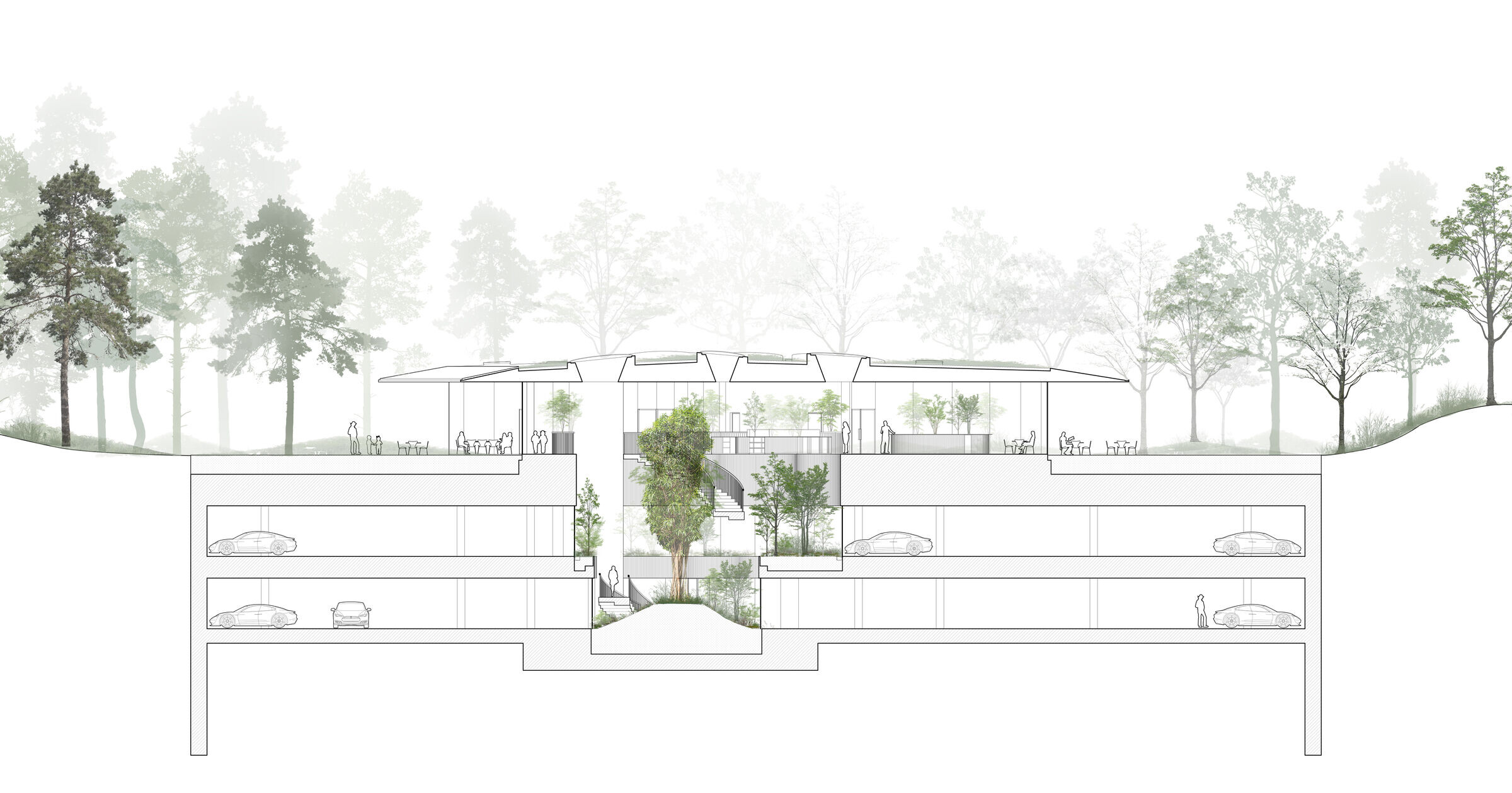Danish architecture studio Cobe announces the completion of The Opera Park in Copenhagen. In a time of intense construction activity throughout Copenhagen, green recreational spaces have become more and more scarce. Yet, in the heart of the dense and historic city center, one of the inner harbor’s prime locations has not been developed, but transformed into a lush, green park island, featuring six gardens and a greenhouse. Situated between The Royal Danish Opera and Cobe’s soon-to-becompleted Paper Island, The Opera Park offers a green escape from the bustling life of the city.
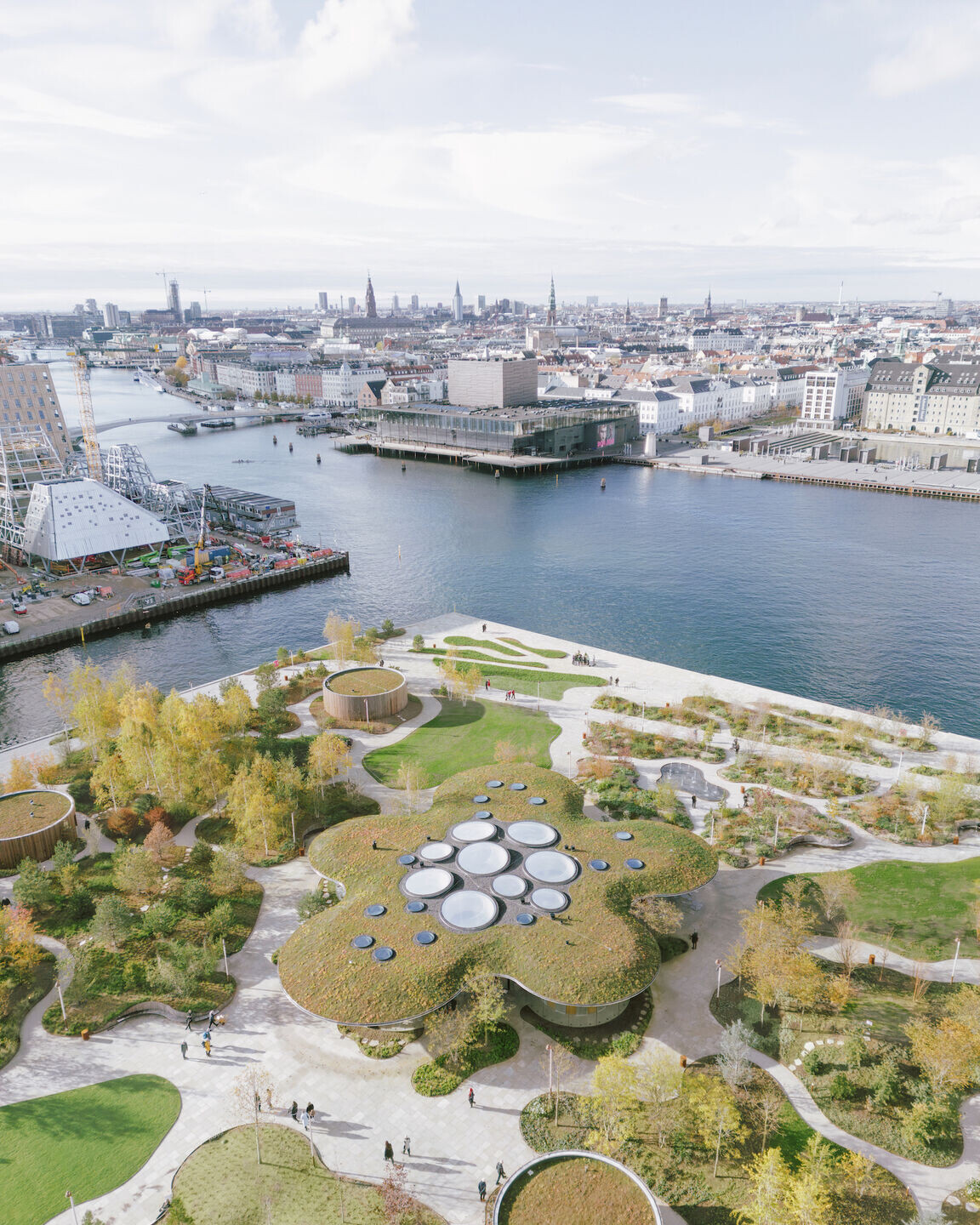
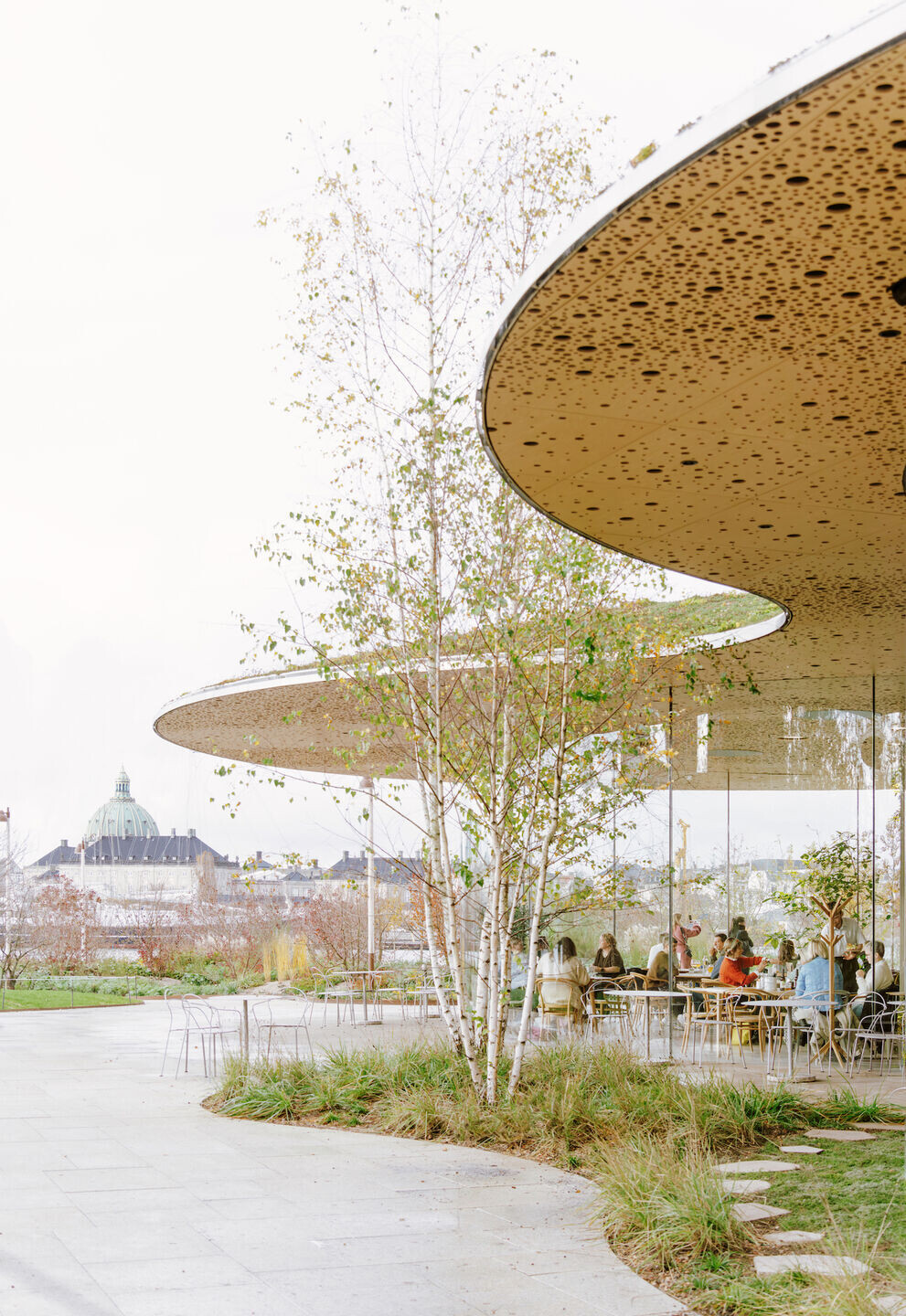
A romantic garden addressing today’s challenges
In 2019, following a design competition, The A.P. Møller Foundation appointed the Danish architecture studio Cobe to design a new park at a former industrial island in Copenhagen’s inner harbor. Located next to The Royal Danish Opera, the site had been a modest green lawn since the completion of the Opera nearly 20 years ago. Utterly transformed today, the island which was otherwise prime for the development of new housing, is now home to a diverse and natural landscape. Named The Opera Park, this new public harbor-front park creates a green counterpoint to the otherwise densely built inner harbor of Copenhagen.

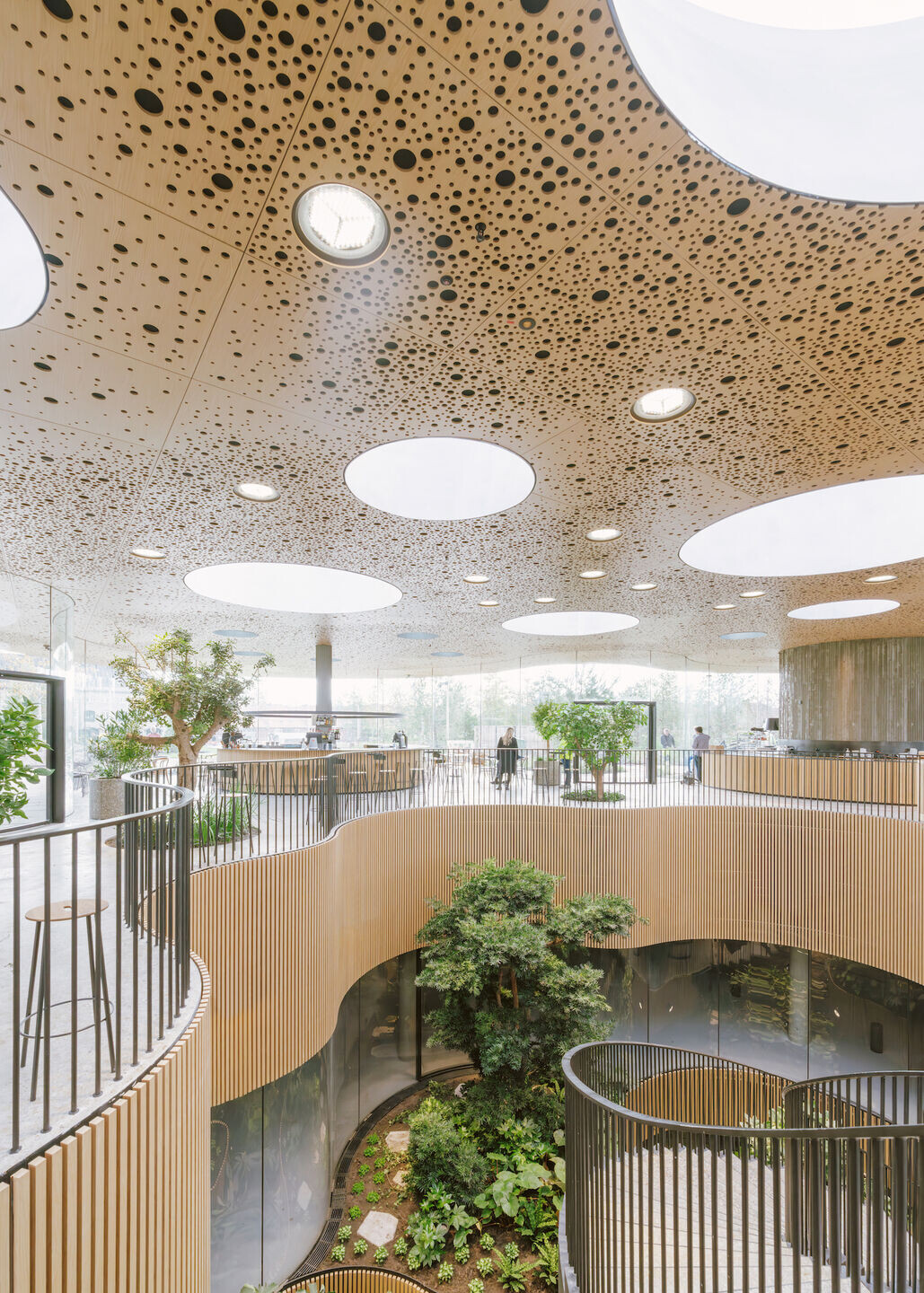
The park, with the size of three soccer fields, consists of six gardens from various parts of the world: the North American Forest, the Danish Oak Forest, the Nordic Forest, the Oriental Garden, the English Garden, and the Subtropical Garden housed within a greenhouse and atrium at its center. The diverse gardens hold surprises such as a fountain, a water lily pond, and a reflecting pool where drops of water from a mast gently strike the water’s surface in a soothing rhythm. Meandering paths and organically shaped flowerbeds knit together the park’s elements.


Dan Stubbergaard, Founder of Cobe and Professor at Harvard, explains: “The Opera Park is a place where nature comes first amidst Copenhagen’s bustling urban development. With its six gardens, winding paths and carefully crafted viewpoints, the project seizes elements of Copenhagen’s historical, romantic gardens to tackle today’s challenges such as decline in biodiversity and water management. Designed for recreation, relaxation and contemplation, the park provides the city with a much-needed green oasis. As you stroll through the park, you get the feeling of having left the city and being immersed in nature, almost forgetting you are in the middle of the dense city center.”

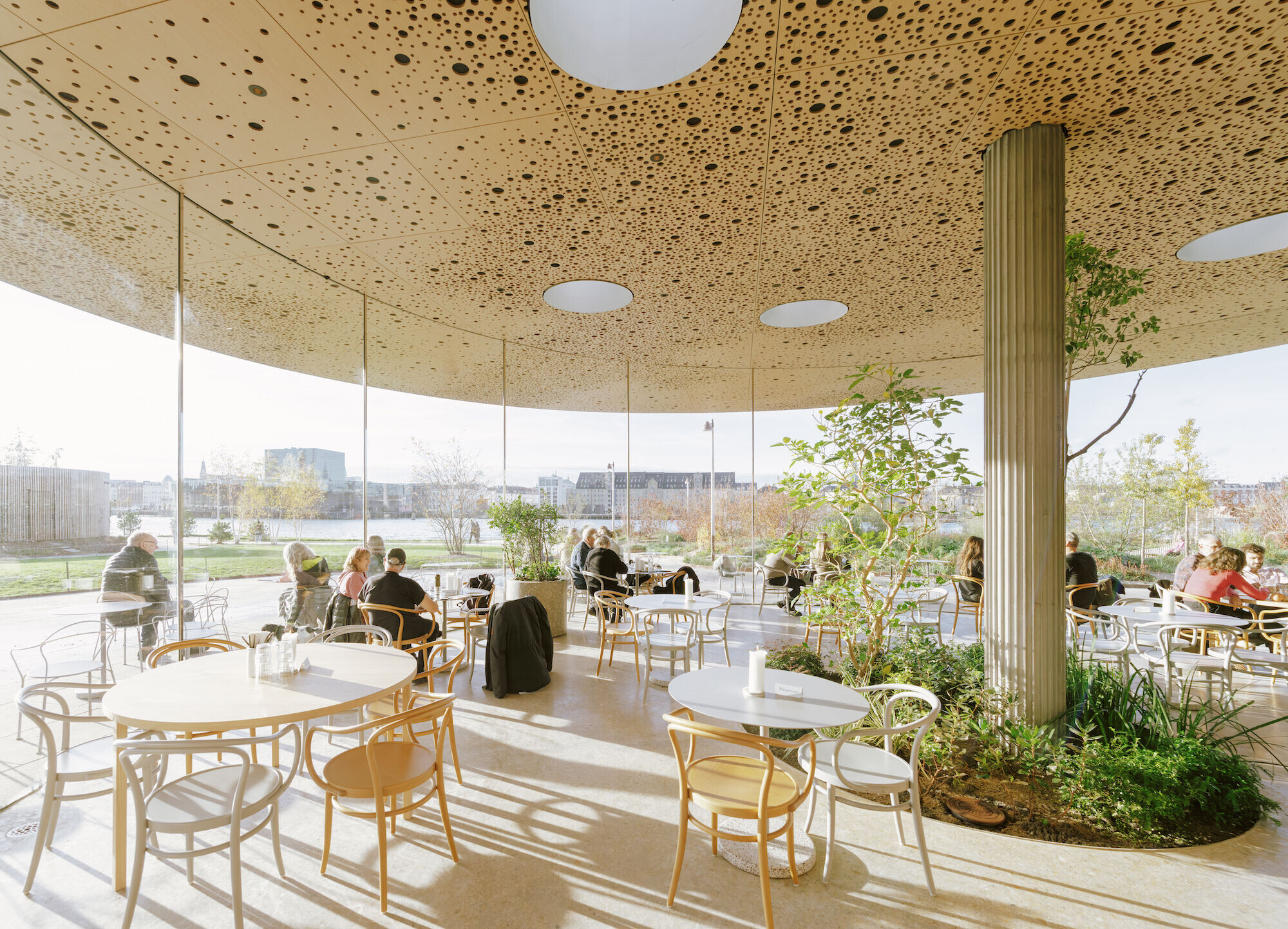
A year-round oasis, setting the stage for all kinds of life
Designed to be an inviting, all year-round public attraction, the park features no less than 628 trees, 80,000 herbaceous perennials and bushes, and 40,000 bulb plants, from all around the world. In total, 223 unique exotic and local species provide a vibrant and ever-changing backdrop for visitors. The vegetation’s appearance, scent, color, and density vary with the seasons. Spring blooms in a rich color palette, summer brings various shades of green, autumn showcases red and yellow tones, and winter is dominated by evergreen pine trees and frozen ponds. The wide variety of plant species and diversity of sizes provides a rich environment for birds and insects to find food and shelter.


Dan Stubbergaard elaborates: “The Opera Park sets the stage for experiencing nature in the heart of Copenhagen. Like an opera stage, the park is a composed landscape with a foreground, a middle ground and a background. The 80,000 plants and 600+ trees are placed to naturally create a scenic setting facing the harbor. The terrain and trees are tallest where they create the background, and lowest in the foreground towards the harbor.”


A greenhouse at the heart
In addition to the gardens, the park features a central greenhouse with a café, giving access to car parking underneath the park’s surface. The greenhouse is designed as an organically shaped glass structure with a hovering roof, intended to surprise and delight visitors as they navigate the lush landscape. The greenhouse and café will ensure that The Opera Park remains a vibrant destination year-round, even during winter when many of Copenhagen’s parks are desolate. Inside, the greenhouse terraces down to the parking levels, which accommodate up to 300 cars, while its subtropic biotope also descends to vertically weave together the park with the underground levels.

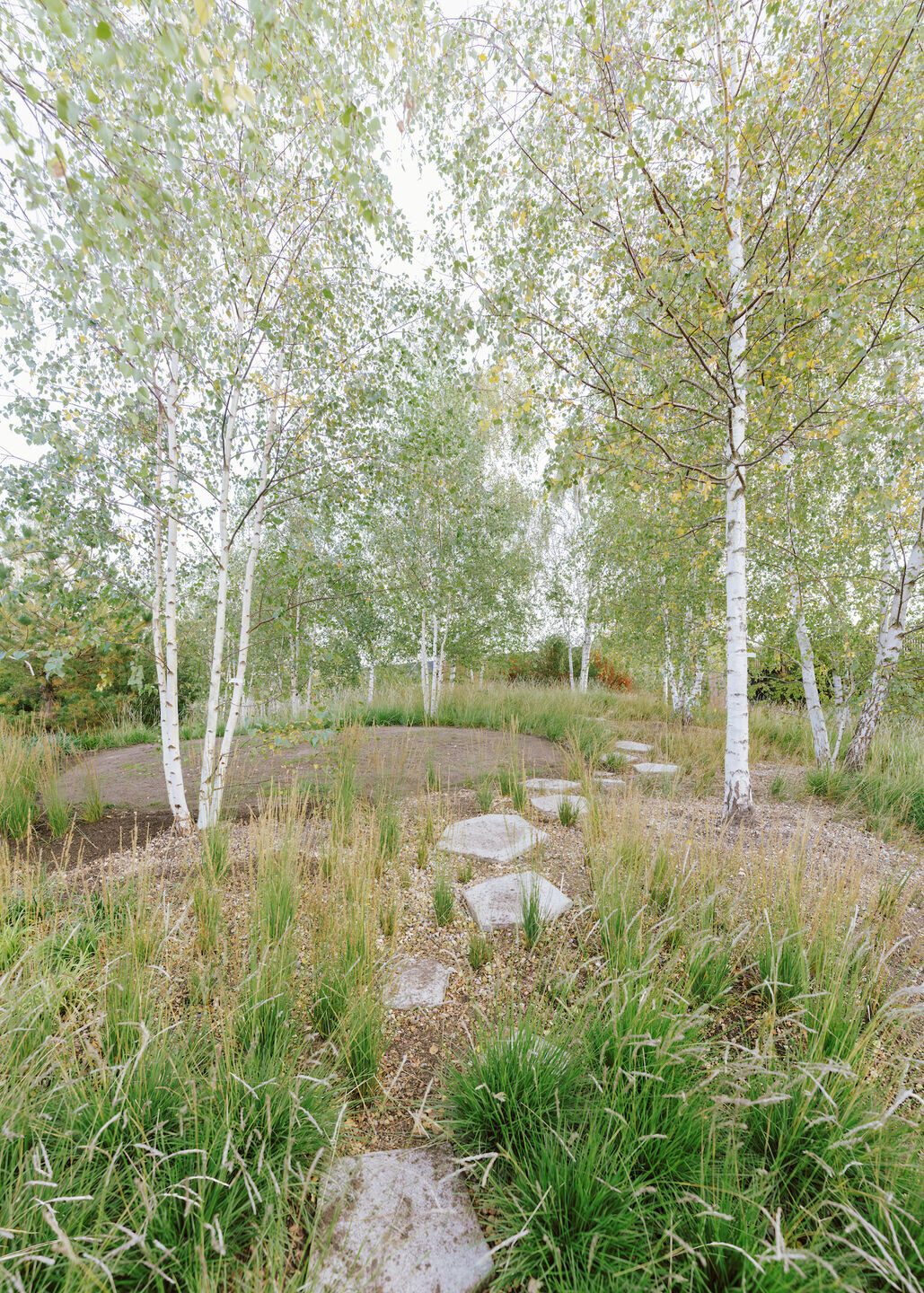
A covered connection to the Opera
The park also features a covered connection to the adjacent Royal Danish Opera via a covered walkway atop a landscaped bridge, allowing a weather protected link between the parking facility and the Opera. Echoing the architecture of the greenhouse, the walkway’s curved glass and floating roof evokes the landscape design in its meandering path. As one of three bridges to the island, the connection is designed as a piece of nature crossing the harbor canal, fully integrating landscape and architecture into one.


Benefitting from rain and sun
Rainwater is considered a valuable resource for the park, channeled from the roof of the Royal Danish Opera into underground water reservoirs used for greenhouse irrigation. Pathways are designed with a permeable gravel surface, and excess rainwater is collected in rain beds for infiltration and evaporation. The green roofs of the landscaped bridge and greenhouse capture and delay the release rainwater to the site while also serving as a food source for the park’s fauna. Solar panels on the Opera’s roof provide power to the underground parking facility, the park and the greenhouse. The park’s chosen materials are robust and fully recyclable, while the abundance of trees and plantings shield against strong winds coming from the harbor and the sea, reducing turbulence and increasing the level of comfort for park users. Furthermore, the elevated terrain safeguards the island from flooding during heavy rainfall and significant rises in the harbor water level.

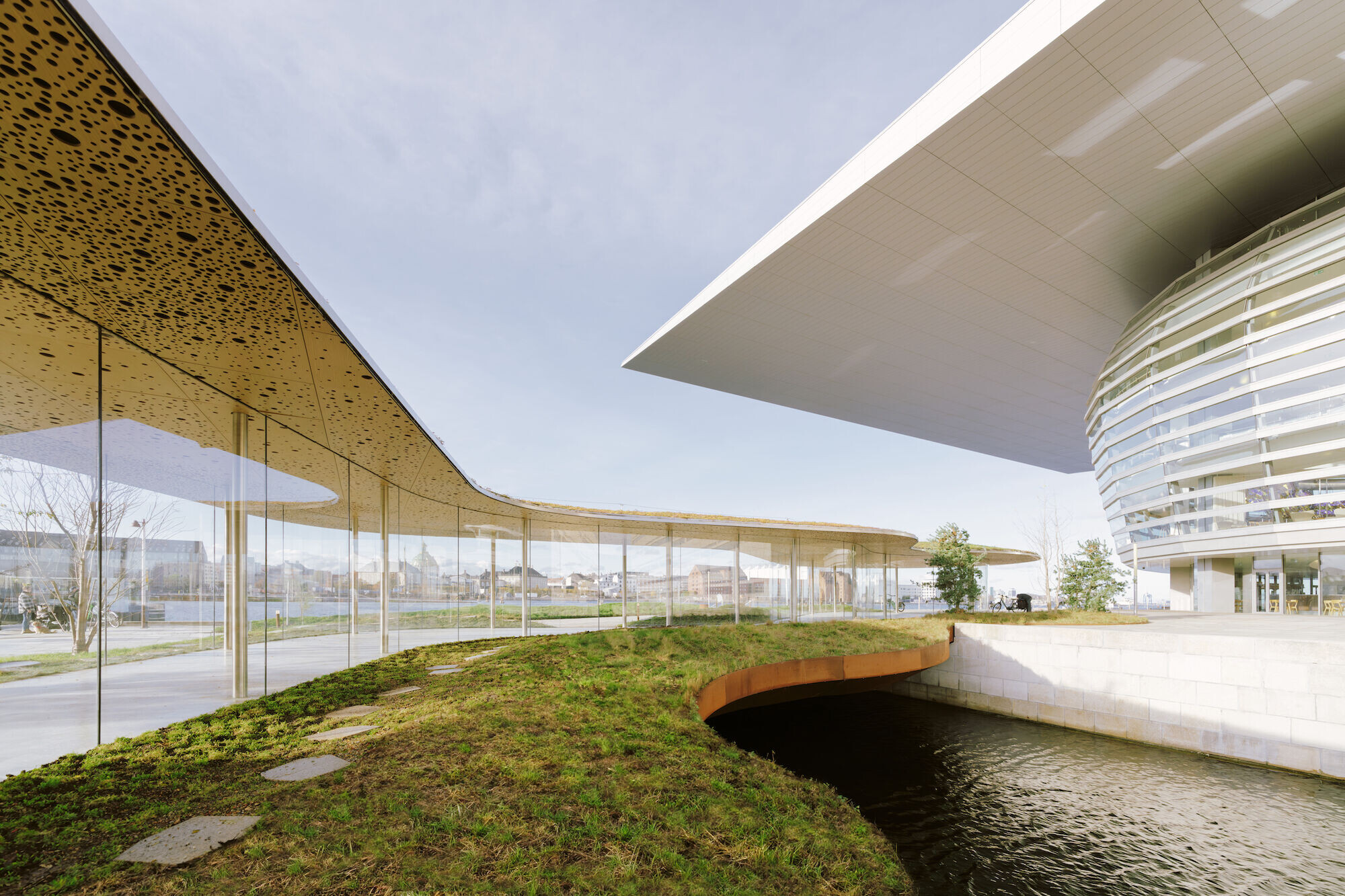
Team:
Client: The Opera Park Foundation
Donation: The A.P. Moller Foundation
Architect and landscape architect: Cobe
Engineers: Vita, Via Trafik, DBI and Lüchninger Meyer Hermansen
Contractors: Hansson og Knudsen, Bauer, Redtz Glas og Façade, HSM Industri, GK Danmark, Bravida Danmark, Høyrup & Clemmesen, KONE, Phønix Tag, Jakon, Areo, Terrazzo.dk, Raadvad Maleren, Snedkerierne, OKNygaard, Palmproject Europe, Scanview Systems, Zurface, Retail Reflexions, Vector Foiltech
Photographer: Francisco Tirado
